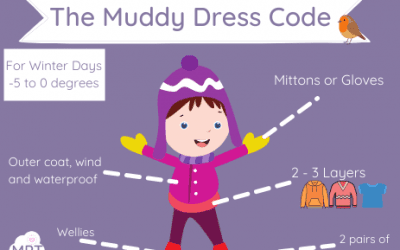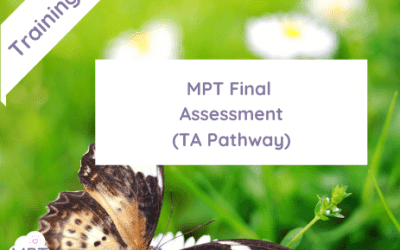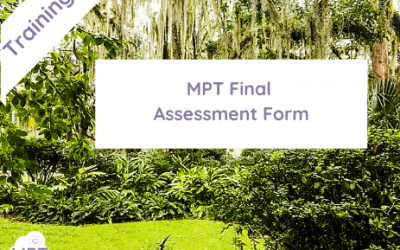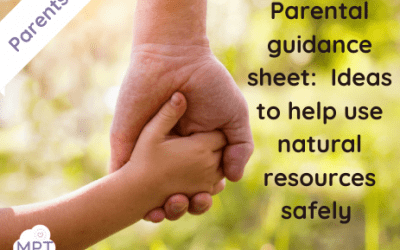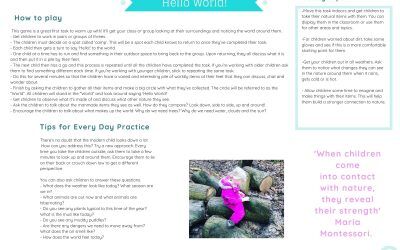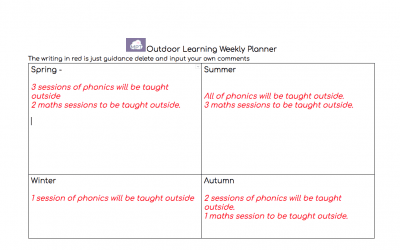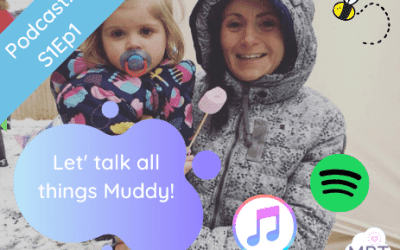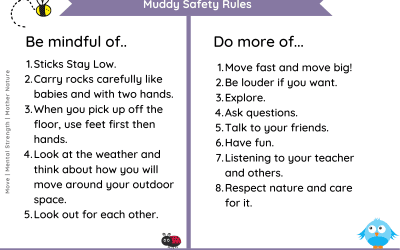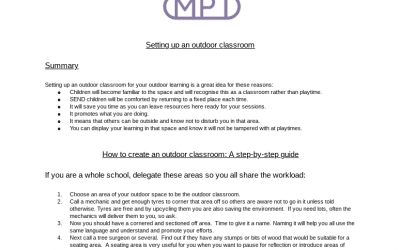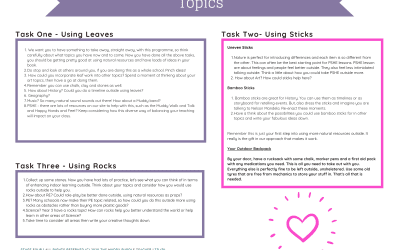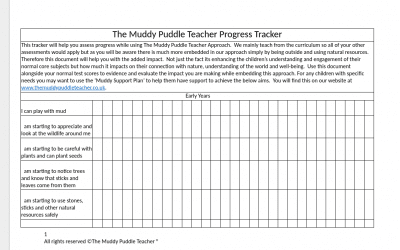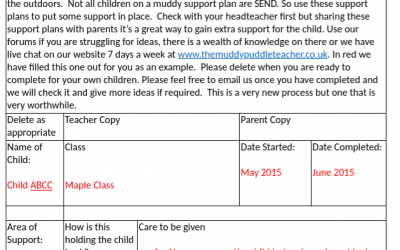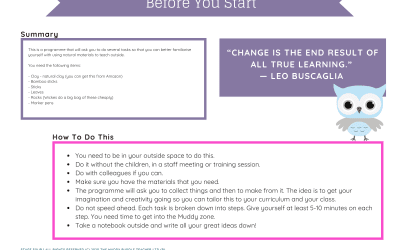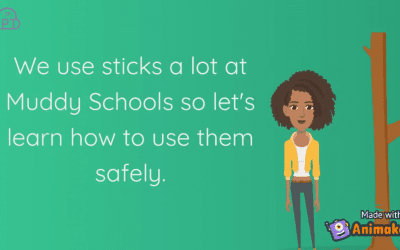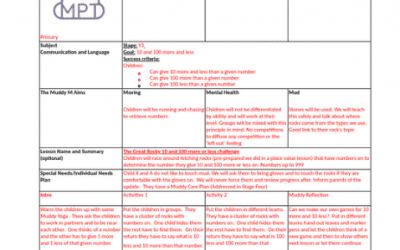As the Norweigian's say - "There's no such thing as bad weather, only bad clothes" Going outside in all weathers...
Post Training Staff Meeting (Powerpoint)
Nov 10, 2021
Post Training Staff Meeting (Powerpoint) to help support reflection and sustainability of the approach post training.
MPT Status Final Assessment (TA Pathway)
Oct 22, 2021
The Final Assessment Form for the Muddy Puddle TA Training Five Reasons Going Outdoors Helps with Children's...
MPT Status Final Assessment (Teacher Pathway)
Oct 22, 2021
To be used as the final submission for as part of the MPT Training Five Reasons Going Outdoors Helps with...
Safety while using Natural Resources
Aug 23, 2021
Use Safety while using Natural Resources to help send a useful ideas pack to parents to help them best navigate how...
Nature Nurture Ideas Pack
Jul 21, 2021
Outdoor Learning Weekly Planner
Jul 5, 2021
This is for use for trainees only.
Podcast S1E1: Let’ talk all things Muddy!
Apr 29, 2021
The world has been crying out for an Outdoor Learning podcast and finally, here it is! This is the very first episode...
Setting up an outdoor classroom (Handout)
Dec 7, 2020
Use Setting up an outdoor classroom to help create an outdoor space that is practical, easy to use and nurtures your...
Muddy Safety Rules (Poster)
Nov 27, 2020
Use Muddy Safety Rules to help put a safety policy in place that children can refer too. It is important that children...
Creating an Outdoor Classroom
Nov 18, 2020
Use Creating an Outdoor Classroom as part of a document needed to complete stage one of the MPT approach training. Our...
Upskill on Natural Resources
Nov 10, 2020
Use Upskill on Natural Resources to help you get better at using natural resources found outside to teach subjects...
Outdoor Learning Progress Tracker – all ages
Nov 4, 2020
The Outdoor Learning Progress Tracker is incredible! It often is hard to prove and show progress from Outdoor Learning...
Outdoor SEND Care Plan
Nov 4, 2020
Use Outdoor SEND Care Plan to help children with individual needs access Outdoor Learning safely. Muddy Puddles has the complete package to support any needs you may have when learning outside. As well as our Outdoor SEND care plan check out our dedicated SEND area.
Upskill on Natural Resources
Oct 26, 2020
Use Upskill on Natural Resources as part of your stage two training process. A great CD top up and refresher on its own.
Inner Tree Template
Oct 14, 2020
Use our Inner Tree Template as part of the stage four training programme task but also use as an in-class activity to help promote wellbeing.
Stick Safety Video – For Kids
Oct 14, 2020
Use this Stick Safety Video to help learn the special Muddy Rhyme we use to keep stick play are and fun!
Primary Outdoor Lesson Plan
Oct 7, 2020
Use Primary Outdoor Lesson Plan as part of Stage Two of The Muddy Puddle Teacher accredited training.
New In
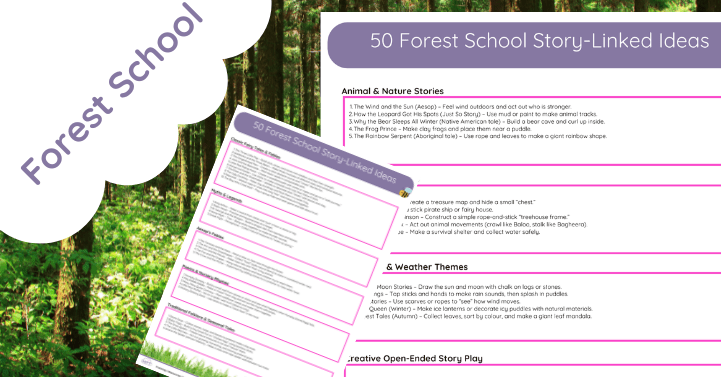
Forest School Story-Linked Lesson Ideas
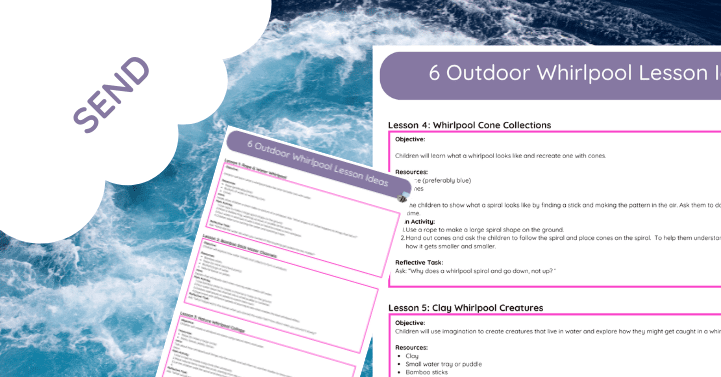
Whirlpool Lesson Ideas – SEND Pack
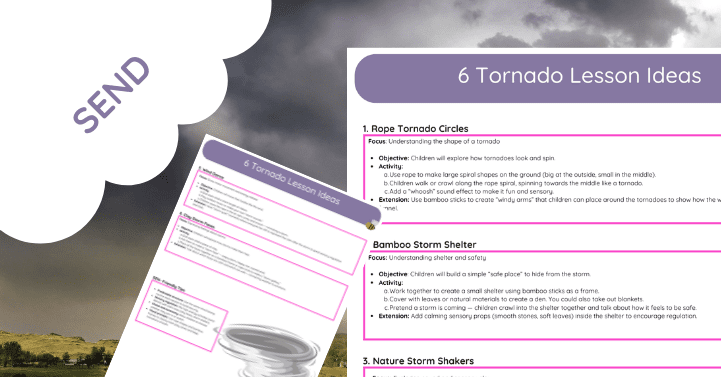
Tornado Lesson Pack for SEND
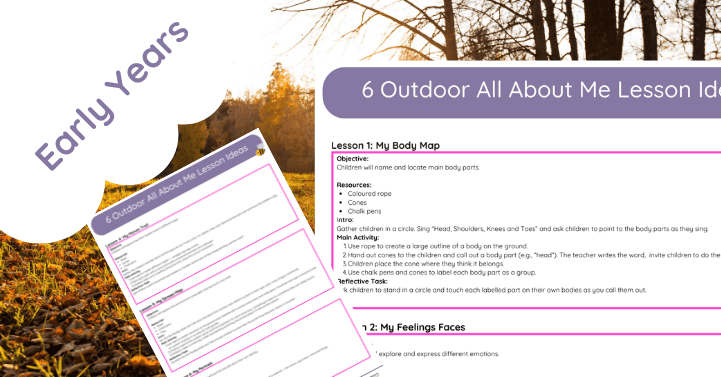
All About Me Lesson Ideas
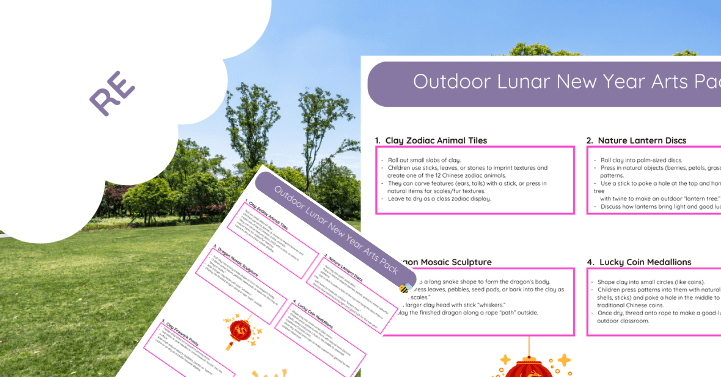
Lunar New Year Outdoor Arts Pack
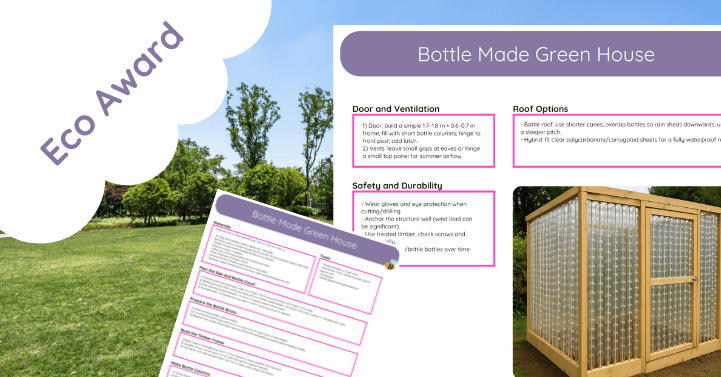
Bottle Greenhouse Instructions
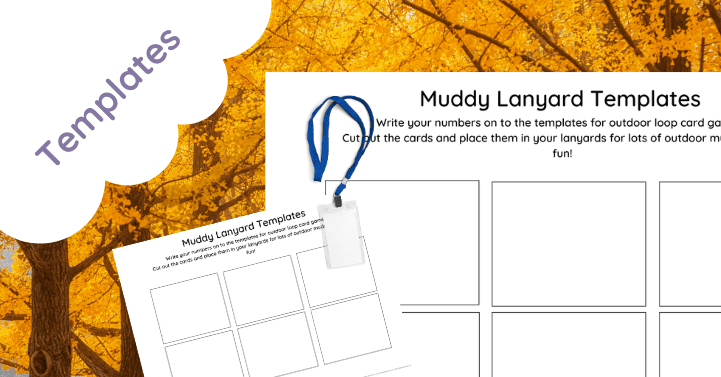
Blank Outdoor Lanyard Template
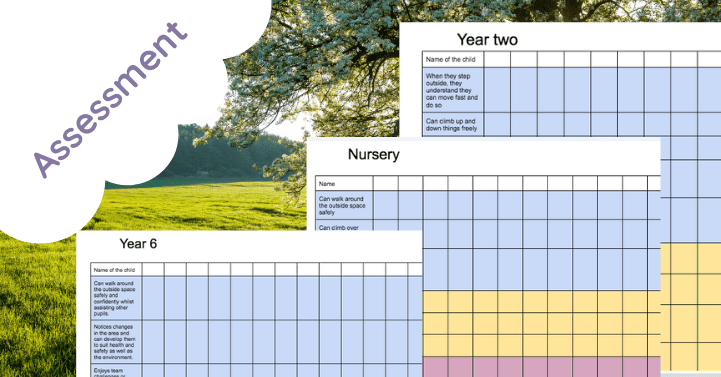
Outdoor Learning Assessment Grid

Nelson Mandela KS1 (Outdoor Lesson Ideas)



